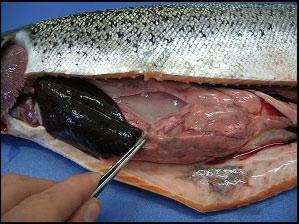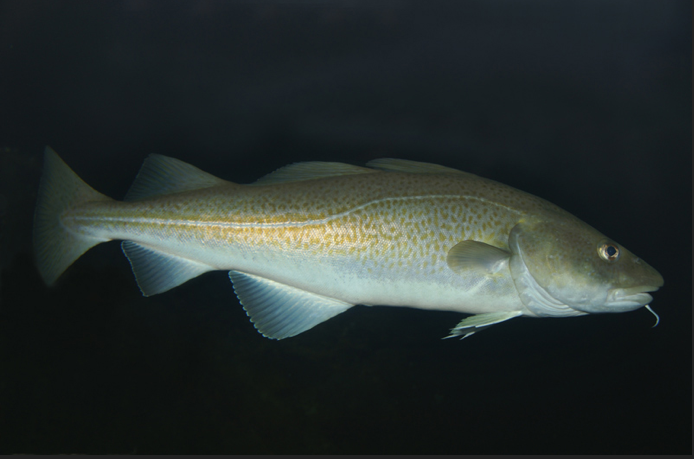You are here
CFIA loses control of ISA virus in eastern Canada

Jan. 28, 2012 CBC article suggests the federal and provincial governments have lost control of the ISA virus in eastern Canada.
"At first, the focus was on eradication of the disease,” Ouellette said. [CFIA]
"We've shifted gears to preventing the spread of the disease and no longer consider eradication as an option."
This means they have lost control of this influenza-type salmon feedlot virus. This turn of events is predictable as it has occurred in almost every region salmon feedlots move into. Most recently it occurred in Chile in 2007, causing the industry $2 billion in losses. Chile has no wild salmon to lose. The pattern is always the same. At first the virus appears controllable, and the industry, wanting to make as much money as possible before it goes deadly, ignores the power of this influenza-type virus and they allow it to mutate into a deadly strain. Then it rips through the industry killing their fish with no attention paid to what is happening to the wild fish outside the feedlots. The trouble wild salmon feedlots is they cannot quarantine, they cannot keep their diseases in their pens because they dump all their raw sewage directly into the ocean through the nets. They never shovel their manure, it pours over the wild fish like a blizzard carried by the tides.
Ominously, the last four ISA virus reports made by the Canadian Food Inspection Agency (CFIA) to the Office of International Epizootics (OIE) describe the virus found in the farm salmon as new strain never seen before.
09/02/2012 - Southern Nova Scotia - "Similar to HPR6 with an additional 4 amino acids missing (Sequencing of segment 6 was performed - pending) Emergency harvest, official destruction / disposal" virus isolation reverse transcription PCR positive
19/06/2012 - Newfoundland - "The strain of ISAV has not been reported in the Atlantic region before; it is believed to be a result of contact with infected wild species" entire farm depopulated, did not affect other feedlots in the area, no reporting on the name of this strain. Concurrent with BKD.
12/06/2012 - Nova Scotia Partial sequence of segment 6: HPR not classified; North American this strain has not been previously identified in the Atlantic region - emergency harvest, disinfection of infected premises - concurrent with BKD
26/11/2012 - Newfoundland - "The identified strain have not been reported before. The population is infected with at least 2 strains of ISAV (non-HPR0) one is most similar to HPR6, the other does not demonstrate any particulate similarity to any previously described HPR type" Both considered North American, hypothesized it came from wild finfish. Vaccinated against ISA, 3.8 kg concurrent with BKD and lice infestation.
Despite the spread of a new strain of virus, the federal government agency in charge of the virus in eastern Canada, and the provincial government in charge of the salmon feedlots have decided to:
"... to allow fish, which are positive for infectious salmon anemia, to remain for half a year in their cages and then to be transferred to a different province for processing, points to a change in CFIA policy."
Government has decided to leave a previously unknown strain of the highly-infectious salmon influenza - type virus, which appears to be killing farmed Atlantic salmon in the same ocean where people fish for food. Furthermore, this suggests the salmon coming out of eastern Canada will be ISA virus contaminated. I don't know why the CFIA is not more concerned about people eating a new mutation of feedlot - origin influenza virus.
There have been statements by Dr. Larry Hammell of PEI that this virus will not harm wild fish, but I am not sure if he has tested this new mutation in herring and Atlantic cod:
"This virus doesn't infect other fish species. It certainly doesn't affect other animals that are even cold-blooded and found in these local environments and certainly it's not going that huge next leap to mammals or humans."
This could be the end of salmon feedlots in eastern Canada. If they have a new and deadly strain of ISA virus running the length of the Maritimes, on top of the drug-resistant lice which will serve to help spread the virus and weaken salmon, they are going to have to figure out how to get the U.S. to buy this, and how to get Canadians to eat this.
As well, if Atlantic cod are valuable to anyone in eastern Canada, I think you need to look into this closely. It may be OK to leave millions of ISA virus infected salmon in the water, but it also might be the last bit of abuse thrown at them by the governments of Canada before they vanish once and for all.
http://alexandramorton.typepad.com/alexandra_morton/2013/01/cfia-loses-control-of-isa-virus-in-eastern-canada.html
http://www.cbc.ca/news/canada/newfoundland-labrador/story/2013/01/28/nb-infectious-salmon-anemia-prevention-730.html

Copyright APES 2012 Website by Ionsign Online

